Description
Name in North American Boletes: Boletus badius AND Boletus badius var. macrostipitatus
Genus: Imleria
- Genus 2: boletus
Species: badia
- Species 2: badius
- Species 3: badius var. macrostipitatus
Common Name: “Bay Bolete”
Tells: Bay-brown cap, often flat or convex. Yellow pores may age greenish, bruise blue/gray green, & are depressed by stem. White cap flesh may bruise pink or blue but only by the tubes.
Other Information: Oft-wrinkled stem colored like cap. Often grows on or near decaying wood, especially conifers. Cap can be viscid.
Science Notes: North American Boletes lists a parallel species, “var. macrostipitatus.” DNA tests have merged this back into the parent, which was moved to the genus “Imleria” and then renamed “badia” instead of “badius” to reflect the now-feminine genus name. Interestingly, the two species were reported to have different chemical test results. The macrostipitatus cap supposedly flashed green before resolving to a dark purple-brown with ammonia, and turned black with KOH.
Edibility: Choice.
CHEMICAL TESTS:
- NH4OH (Ammonia): Cap surface turns green to blue.
- KOH: Cap surface turns blackish. Pores turn golden brown.
- FeSO4 (Iron Salts): Cap surface turns bluish green. Flesh turns dull blue-green.
Links:
 |
565 |  |
315 |  |
96 |  |
227 |

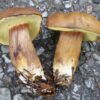
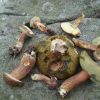
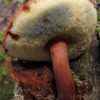
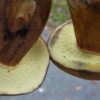
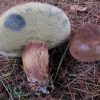
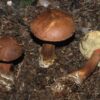
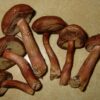
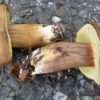
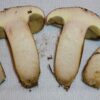
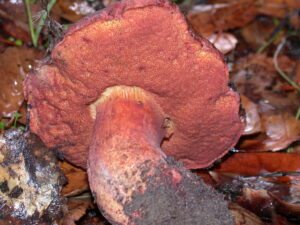
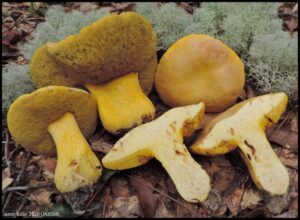
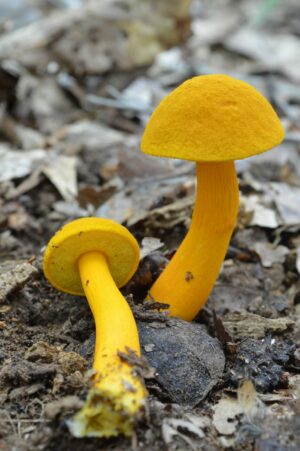
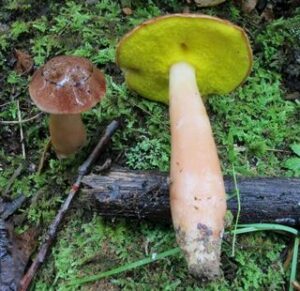
Got something to discuss?
My specimen meets all of the criteria for badius – yet it does not bruise. Convex, young firm, brown burnt sienna clearly brown, same color stem. light yellow small pores. Smells STRONG. Does not bruise. Waynesville, Nc found Black Balsm 5700′